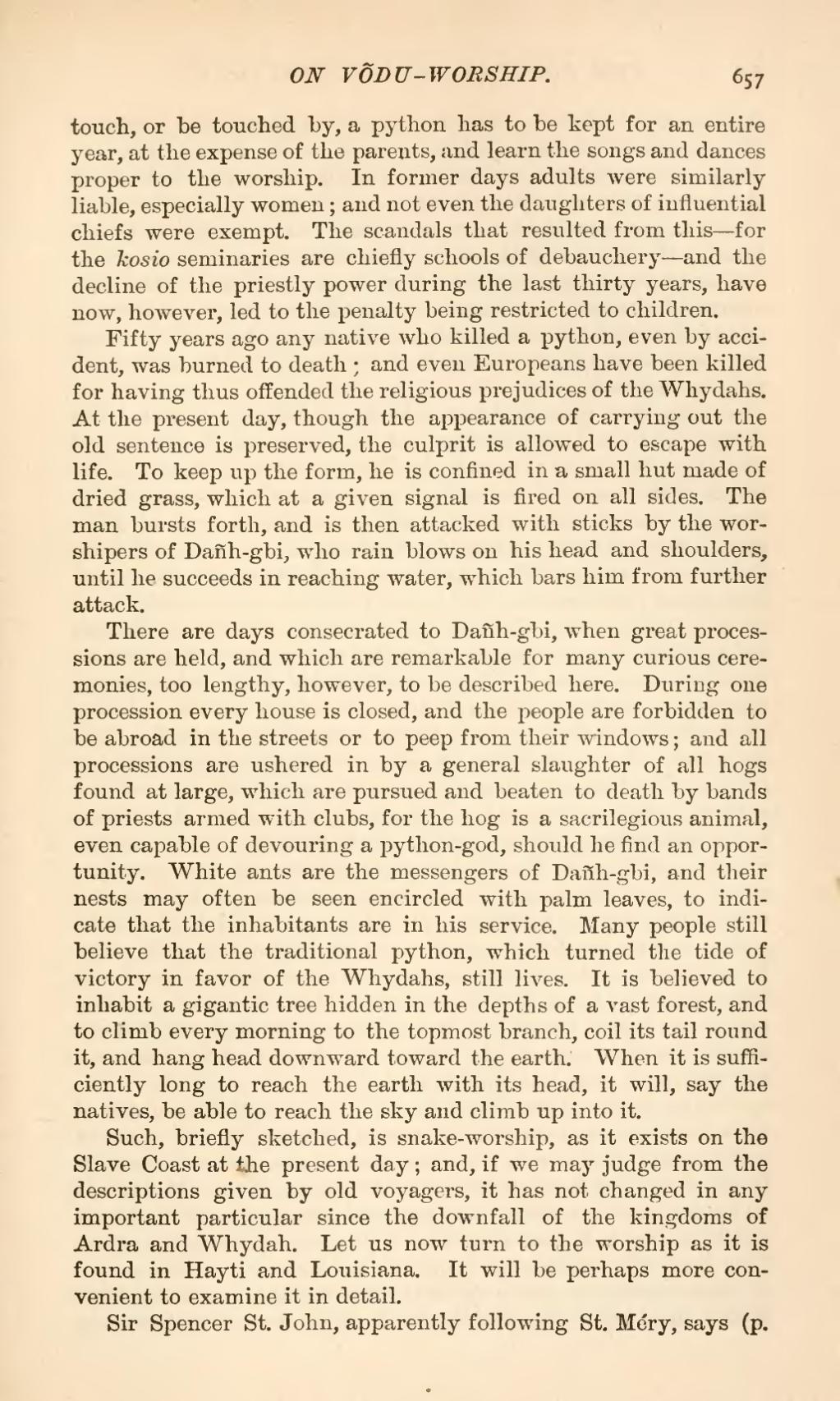touch, or be touched by, a python has to be kept for an entire year, at the expense of the parents, and learn the songs and dances proper to the worship. In former days adults were similarly liable, especially women; and not even the daughters of influential chiefs were exempt. The scandals that resulted from this—for the kosio seminaries are chiefly schools of debauchery—and the decline of the priestly power during the last thirty years, have now, however, led to the penalty being restricted to children.
Fifty years ago any native who killed a python, even by accident, was burned to death; and even Europeans have been killed for having thus offended the religious prejudices of the Whydahs. At the present day, though the appearance of carrying out the old sentence is preserved, the culprit is allowed to escape with life. To keep up the form, he is confined in a small hut made of dried grass, which at a given signal is fired on all sides. The man bursts forth, and is then attacked with sticks by the worshipers of Dañh-gbi, who rain blows on his head and shoulders, until he succeeds in reaching water, which bars him from further attack.
There are days consecrated to Dañh-gbi, when great processions are held, and which are remarkable for many curious ceremonies, too lengthy, however, to be described here. During one procession every house is closed, and the people are forbidden to be abroad in the streets or to peep from their windows; and all processions are ushered in by a general slaughter of all hogs found at large, which are pursued and beaten to death by bands of priests armed with clubs, for the hog is a sacrilegious animal, even capable of devouring a python-god, should he find an opportunity. White ants are the messengers of Dañh-gbi, and their nests may often be seen encircled with palm leaves, to indicate that the inhabitants are in his service. Many people still believe that the traditional python, which turned the tide of victory in favor of the Whydahs, still lives. It is believed to inhabit a gigantic tree hidden in the depths of a vast forest, and to climb every morning to the topmost branch, coil its tail round it, and hang head downward toward the earth. When it is sufficiently long to reach the earth with its head, it will, say the natives, be able to reach the sky and climb up into it.
Such, briefly sketched, is snake-worship, as it exists on the Slave Coast at the present day; and, if we may judge from the descriptions given by old voyagers, it has not changed in any important particular since the downfall of the kingdoms of Ardra and Whydah. Let us now turn to the worship as it is found in Hayti and Louisiana. It will be perhaps more convenient to examine it in detail.
Sir Spencer St. John, apparently following St. Méry, says (p.
